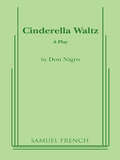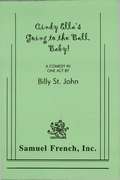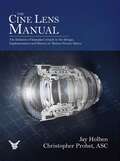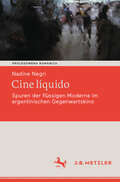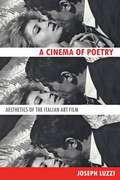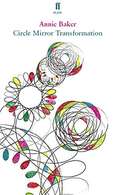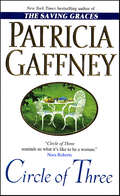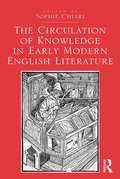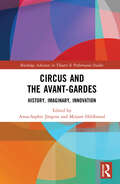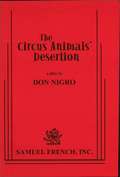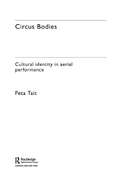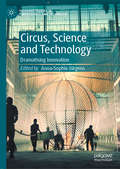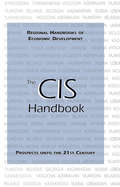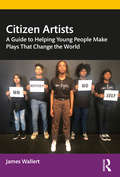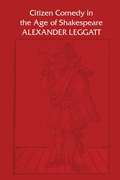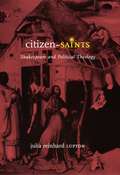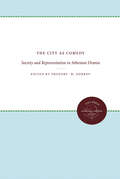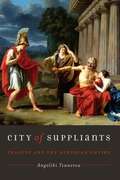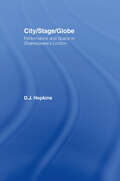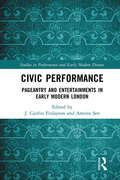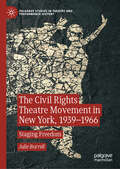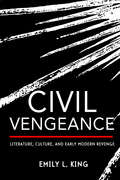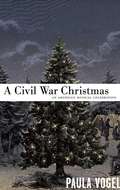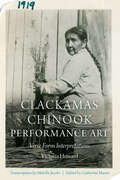- Table View
- List View
Cinderella Waltz
by Don NigroDon Nigro . Comedy. Characters: 4 male, 5 female. Single Set. Rosey Snow is trapped in a fairy tale world that is by turns funny and a little frightening, with her stepsisters Goneril and Regan, her demented stepmother, her lecherous father, a bewildered Prince, a fairy godmother who sings salty old sailor songs, a troll and a possibly homicidal village idiot. This play investigates the archetypal origins of the world's most popular fairy tale, contrasting the familiar and charming Perrault version with the darker, more ancient and disturbing tale recorded by the brothers Grimm. Grotesque farce and romantic fantasy blend in a fairy tale for adults.
The Cindy Ella's Going to the Ball
by Billy St. JohnComedy / 4m, 7f, extras / Interiors / This hilarious takeoff on Cinderella is set in a contemporary high school at prom time. Cindy Ella's stepsisters, Prissy and Missy, are hoping that Joe Prince will dance with them, while her stepmother hopes to find husband number three among the teachers chaperoning. Big Mama arrives in a puff of smoke to make sure that Cindy gets to the prom and hooks up with dreamboat Joe Prince. But is he really her Prince Charming? This comedy by the author of Reunion, Is There a Comic in the House and Abduction is perfect for teen and family audiences.
The Cine Lens Manual
by Jay Holben Christopher Probst AscFor anyone with a curiosity about cinema optics, The Cine Lens Manual is the definitive filmmaker's guide to the design, implementation, and history of motion picture optics. Authors Jay Holben and Christopher Probst share more than 60 years experience as cinematographers, educators, and technical journalists, creating a manual for anyone who seeks a deeper understanding of the cinema lens. This hardcover offers a comprehensive examination of the cine lens, with a deep dive into the art and science behind creating a cinema lens. <P><P> Cinematographers, directors, VFX artists, camera assistants, animators, historians, students, and rental house technicians will all benefit from the clear, easy to understand concepts, explained in simple language. Extensively illustrated, this manual examines the history and evolution of the cinema lens and motion picture formats.
Cine líquido: Spuren der flüssigen Moderne im argentinischen Gegenwartskino (Prolegomena Romanica. Beiträge zu den romanischen Kulturen und Literaturen)
by Nadine NegriMitte der 90er Jahre wendet sich in Argentinien eine neue Kinoströmung radikal von den bis dato gültigen, vom Hollywoodkino inspirierten und pathetischen Filmstandards ab. Die von der Kritik schnell unter dem Sammelbegriff „Nuevo Cine Argentino“ zusammengefassten Werke zeichnen sich jedoch neben minimalistischen Tendenzen und Parallelen zum italienischen Neorealismus und der französischen „Nouvelle Vague“ insbesondere durch ihre Heterogenität aus. Die vorliegende Studie versteht das „Nuevo Cine Argentino“ als Manifestation einer ganzheitlichen soziokulturellen und geistigen Transformation: Die Entstehung des neuen argentinischen Films fällt mit einer Verflüssigung (Zygmunt Bauman), einer umfassenden Dynamisierung, Dezentralisierung und Individualisierung der westlichen Gesellschaften um die Jahrtausendwende zusammen. Die Studie geht von der Hypothese aus, dass sich gerade in den Eigenschaften des Flüssigen – Flexibilität, Flüchtigkeit und Formlosigkeit – ein Schlüssel für die Beschreibung des „Nuevo Cine Argentino“ findet. Sowohl inhaltlich auch formell finden sich in den Filmen Spuren der flüssigen Moderne. Anhand von zahlreichen bekannten, aber auch weniger rezipierten Filmen der letzten 25 Jahre erarbeitet die Autorin Charakteristika eines „cine líquido“. Dieses wird präsentiert als ein instrumenteller Kinomodus, der für die Darstellung von sozialen Verflüssigungsprozessen genutzt werden kann.
A Cinema of Poetry: Aesthetics of the Italian Art Film
by Joseph LuzziLuzzi's study is the first to show how Italian filmmakers address such crucial aesthetic issues as the nature of the chorus, the relation between symbol and allegory, the literary prehistory of montage, and the place of poetry in cinematic expression-what Pasolini called the cinema of poetry.
Circle Mirror Transformation
by Annie BakerThanks, you guys. I think this was a really, really great start. Five lost people come together at a community centre class to try and find some meaning in their lives. Counting to ten can be harder than you think. Over six tangled weeks their lives become knotted together in this tender and funny play. Annie Baker's Circle Mirror Transformation won a New York Drama Critics Circle Award and the 2010 Obie Award for Best New American Play. It was voted one of the top ten plays of 2009 by the New York Times, Time Out and the New Yorker. It premiered in the UK as part of the Royal Court's Theatre Local strand of site specific productions across London.
Circle of Three: A Novel
by Patricia Gaffney“Gaffney’s characters are appealing and realistic…Readers will race through this book.”—New Orleans Times Picayune“Poignant….Entertaining….As good as it gets.”—New York PostNo other author writes about the lives and friendships of women with more warmth and grace than New York Times bestseller Patricia Gaffney. A true master of women’s fiction, with Circle of Three she flourishes the same breathtaking characterization and storytelling skills that made her previous novel, The Saving Graces, a readers’ favorite. The story of a woman grieving for her losses and her life, and her relationship with her overbearing mother and precocious young daughter, Circle of Three focuses on three generations of a troubled family, the anger and misunderstanding that separates them…and the love that holds them together. Gaffney does beautifully what Elizabeth Berg, Anne Rivers Siddons, and Anne Tyler also do so well: exploring the tricky bonds of family in novels both heart-soaring and heartbreaking.
The Circulation of Knowledge in Early Modern English Literature
by Sophie ChiariWith its many rites of initiation (religious, educational, professional or sexual), Elizabethan and Jacobean education emphasized both imitation and discovery in a struggle to bring population to a minimal literacy, while more demanding techniques were being developed for the cultural elite. The Circulation of Knowledge in Early Modern English Literature examines the question of transmission and of the educational procedures in16th- and 17th-century England by emphasizing deviant practices that questioned, reassessed or even challenged pre-established cultural norms and traditions. This volume thus alternates theoretical analyses with more specific readings in order to investigate the multiple ways in which ideas then circulated. It also addresses the ways in which the dominant cultural forms of the literature and drama of Shakespeare’s age were being subverted. In this regard, its various contributors analyze how the interrelated processes of initiation, transmission and transgression operated at the core of early modern English culture, and how Christopher Marlowe, William Shakespeare and Thomas Middleton, or lesser known poets and playwrights such as Thomas Howell, Thomas Edwards and George Villiers, managed to appropriate these cultural processes in their works.
Circus and the Avant-Gardes: History, Imaginary, Innovation (Routledge Advances in Theatre & Performance Studies)
by Anna-Sophie Jürgens and Mirjam HildbrandThis book examines how circus and circus imaginary have shaped the historical avant-gardes at the beginning of the 20th century and the cultures they help constitute, to what extent this is a mutual shaping, and why this is still relevant today. This book aims to produce a better sense of the artistic work and cultural achievements that have emerged from the interplay of circus and avant-garde artists and projects, and to clarify both their transhistorical and trans-medial presence, and their scope for interdisciplinary expansion. Across 14 chapters written by leading scholars – from fields as varied as circus, theatre and performance studies, art, media studies, film and cultural history – some of which are written together with performers and circus practitioners, the book examines to what extent circus and avant-garde connections contribute to a better understanding of early 20th century artistic movements and their enduring legacy, of the history of popular entertainment, and the cultural relevance of circus arts. Circus and the Avant-Gardes elucidates how the realm of the circus as a model, or rather a blueprint for modernist experiment, innovation and (re)negotiation of bodies, has become fully integrated in our ways of perceiving avant-gardes today. The book does not only map the significance of circus/avant-garde phenomena for the past, but, through an exploration of their contemporary actualisations (in different media), also carves out their achievements, relevance, and impact, both cultural and aesthetic, on the present time.
Circus Animals' Desertion
by Don NigroComedic Drama / 3m, 4f / Unit Set / Set in the early 1940's, this funny play tells the eerie story of frustrating, neurotic and irresponsible but resilient and strangely appealing Becky Armitage. This young lady leaves a trail of chaos but always manages to land on her feet. Because her mother died when she was born, she was raised by aunts who do not know what to do with her. Nobody will tell her who her father is. When the DeFlores carnival comes to town, she is seduced in the hall of mirrors by Romeo DeFlores. He skips town leaving her pregnant. She marries the town librarian and he is a good father to her child, but when the carnival returns she conceives another child in the labyrinth of mirrors and her gentle husband begins to lose his mind. An addition to the author's Pendragon plays, this moving play features characters that also appear in Chronicles and November. In the series the Pendragon Plays
Circus Bodies: Cultural Identity in Aerial Performance
by Peta TaitThis pioneering study is one of the major publications in the increasingly popular and largely undocumented area of circus studies. Through photographs and illustrations, Peta Tait presents an extraordinary survey of 140 years of trapeze acts and the socially changing ideas of muscular action in relation to our understanding of gender and sexuality. She questions how spectators see and enjoy aerial actions, and what cultural identities are presented by bodies in fast, physical aerial movement. Adeptly locating aerial performance within the wider cultural history of bodies and their identities, Circus Bodies explores this subject through a range of films such as Trapeze (1956) and Wings of Desire (1987) and Tait also examines live performances including: * the first trapeze performers: Léotard and the Hanlon Brothers* female celebrities; Azella, Sanyeah, black French aerialist LaLa, the infamous Leona Dare, and the female human cannonballs* twentieth-century gender benders; Barbette and Luisita Leers* the Codonas, Concellos, Gaonas, Vazquez and Pages troupes* imaginative aerial acts in Cirque de Soleil and Circus Oz productions. This book will prove an invaluable resource for all students and scholars interested in this fascinating field.
Circus, Science and Technology: Dramatising Innovation (Palgrave Studies in Performance and Technology)
by Anna-Sophie JürgensThis book explores the circus as a site in and through which science and technology are represented in popular culture. Across eight chapters written by leading scholars – from fields as varied as performance and circus studies, art, media and cultural history, and engineering – the book discusses to what extent the engineering of circus and performing bodies can be understood as a strategy to promote awe, how technological inventions have shaped circus and the cultures it helps constitute, and how much of a mutual shaping this is. What kind of cultural and aesthetic effects does engineering in circus contexts achieve? How do technological inventions and innovations impact on the circus? How does the link between circus and technology manifest in representations and interpretations – imaginaries – of the circus in other media and popular culture? Circus, Science and Technology examines the ways circus can provide a versatile frame for interpreting our relationship with technology.
The CIS Handbook (Regional Handbooks of Economic Development #Vol. 4)
by Patrick Heenan Monique Lamontagne Ronald J. Hill Bogdan SzajkowskiFirst Published in 2000. Routledge is an imprint of Taylor & Francis, an informa company.
Citizen Artists: A Guide to Helping Young People Make Plays That Change the World
by James WallertCitizen Artists takes the reader on a journey through the process of producing, funding, researching, creating, rehearsing, directing, performing, and touring student-driven plays about social justice. The process at the heart of this book was developed from 2015–2021 at New York City’s award-winning Epic Theatre Ensemble with and for their youth ensemble: Epic NEXT. Author and Epic Co-Founder James Wallert shares his company’s unique, internationally recognized methodology for training young arts leaders in playwriting, inquiry-based research, verbatim theatre, devising, applied theatre, and performance. Readers will find four original plays, seven complete timed-to-the-minute lesson plans, 36 theatre arts exercises, and pages of practical advice from more than two dozen professional teaching artists to use for their own theatre making, arts instruction, or youth organizing. Citizen Artists is a one-of-a-kind resource for students interested in learning about theatre and social justice; educators interested in fostering learning environments that are more rigorous, democratic, and culturally-responsive; and artists interested in creating work for new audiences that is more inclusive, courageous, and anti-racist.
Citizen Comedy in the Age of Shakespeare (The Royal Society of Canada Special Publications)
by Alexander LeggattThis is the first book to survey comprehensively the field of Elizabethan and Jacobean citizen comedy. Most studies of the period focus on major authors; this one follows recurring themes and motifs, through a variety of plays by many authors from the moralizing comedies of the boys' companies. Professor Leggatt provides not only a fresh perspective on familiar plays by such figures as Jonson, Middleton, and Dekker, but also a new look at a number of neglected comedies, some by unfamiliar authors, some by major authors working together. Standard figures – the usurer, the prodigal, and the prostitute – and standard plots – notably intrigues based on money or sex (or both) – are traced to show the changes that occur in apparently stereotyped material at the hands of individual authors. The result is to display the range and internal variety of a genre that too often is seen as all of a piece, and to show the different ways in which social thinking can interact with the demands and comic form.This book will interest students of Renaissance English drama, both for its treatment of a neglected type of play and for its comments on individual citizen comedies. Those who are concerned with drama as a vehicle for social commentary will find many points for discussion.
Citizen-Saints: Shakespeare and Political Theology
by Julia Reinhard LuptonTurning to the potent idea of political theology to recover the strange mix of political and religious thinking during the Renaissance, this bracing study reveals in the works of Shakespeare and his sources the figure of the citizen-saint, who represents at once divine messenger and civil servant, both norm and exception. Embodied by such diverse personages as Antigone, Paul, Barabbas, Shylock, Othello, Caliban, Isabella, and Samson, the citizen-saint is a sacrificial figure: a model of moral and aesthetic extremity who inspires new regimes of citizenship with his or her death and martyrdom. Among the many questions Julia Reinhard Lupton attempts to answer under the rubric of the citizen-saint are: how did states of emergency, acts of sovereign exception, and Messianic anticipations lead to new forms of religious and political law? What styles of universality were implied by the abject state of the pure creature, at sea in a creation abandoned by its creator? And how did circumcision operate as both a marker of ethnicity and a means of conversion and civic naturalization? Written with clarity and grace, Citizen-Saints will be of enormous interest to students of English literature, religion, and early modern culture.
The City as Comedy: Society and Representation in Athenian Drama
by Gregory W. DobrovThese thirteen essays combine classical scholars' interest in theatrical production with a growing interdisciplinary inquiry into the urban contexts of literary production. Taking as their departure point the annual comic competitions at the Athenian dramatic festivals, the contributors examine how the polis--as a place, a political entity, a specific social organization, and a set of ideological representations--was enacted on stage from the middle of the fifth century B.C. through the fourth. Applying a variety of critical approaches to Athenian comedy, these essays are grouped around three broad categories: utopianism, fissures in the social fabric, and the new polis of fourth-century comedy. The contributors explore the sociopolitical and material contexts of the works discussed and trace the genre into the fourth century, when it underwent profound changes. Simultaneously a study of classical Greek literature and an analysis of cultural production, this collection reveals how for two centuries Athens itself was transformed, staged as comedy, and, ultimately, shaped by contemporary material, social, and ideological forces. The contributors are Elizabeth Bobrick, Gregory Crane, Gregory Dobrov, Malcolm Heath, Jeffrey Henderson, Timothy P. Hofmeister, Thomas K. Hubbard, David Konstan, Heinz-GAnther Nesselrath, Frank Romer, Ralph M. Rosen, Niall W. Slater, and John Wilkins.A UNC Press Enduring Edition -- UNC Press Enduring Editions use the latest in digital technology to make available again books from our distinguished backlist that were previously out of print. These editions are published unaltered from the original, and are presented in affordable paperback formats, bringing readers both historical and cultural value.
City of Suppliants: Tragedy and the Athenian Empire
by Angeliki TzanetouAfter fending off Persia in the fifth century BCE, Athens assumed a leadership position in the Aegean world. Initially it led the Delian League, a military alliance against the Persians, but eventually the league evolved into an empire with Athens in control and exacting tribute from its former allies. Athenians justified this subjection of their allies by emphasizing their fairness and benevolence towards them, which gave Athens the moral right to lead. But Athenians also believed that the strong rule over the weak and that dominating others allowed them to maintain their own freedom. These conflicting views about Athens' imperial rule found expression in the theater, and this book probes how the three major playwrights dramatized Athenian imperial ideology. Through close readings of Aeschylus' Eumenides, Euripides' Children of Heracles, and Sophocles' Oedipus at Colonus, as well as other suppliant dramas, Angeliki Tzanetou argues that Athenian tragedy performed an important ideological function by representing Athens as a benevolent and moral ruler that treated foreign suppliants compassionately. She shows how memorable and disenfranchised figures of tragedy, such as Orestes and Oedipus, or the homeless and tyrant-pursued children of Heracles were generously incorporated into the public body of Athens, thus reinforcing Athenians' sense of their civic magnanimity. This fresh reading of the Athenian suppliant plays deepens our understanding of how Athenians understood their political hegemony and reveals how core Athenian values such as justice, freedom, piety, and respect for the laws intersected with imperial ideology.
City/Stage/Globe: Performance and Space in Shakespeare's London (Literary Criticism and Cultural Theory)
by D.J. HopkinsThis interdisciplinary study theorizes the interaction of individual performance and social space. Examining three categories of space – the urban, the theatrical, and the cartographic – this volume considers the role of performance in the production and operation of these spaces during a period in London’s history defined roughly by the life of Shakespeare. City/Stage/Globe not only organizes a selection of plays, pageants, maps, and masques in the historical and cultural contexts in which they emerged, but also uses performance theory to locate the ways in which these seemingly ephemeral events contributed to lasting change in the spatial concepts and physical topograpy of early modern London.
City Stages
by Michael MckinnieIn every major city, there exists a complex exchange between urban space and the institution of the theatre. City Stages is an interdisciplinary and materialist analysis of this relationship as it has existed in Toronto since 1967. Locating theatre companies ? their sites and practices ? in Toronto?s urban environment, Michael McKinnie focuses on the ways in which the theatre has adapted to changes in civic ideology, environment, and economy. Over the past four decades, theatre in Toronto has been increasingly implicated in the civic self-fashioning of the city and preoccupied with the consequences of the changing urban political economy. City Stages investigates a number of key questions that relate to this pattern. How has theatre been used to justify certain forms of urban development in Toronto? How have local real estate markets influenced the ways in which theatre companies acquire and use performance space? How does the analysis of theatre as an urban phenomenon complicate Canadian theatre historiography? McKinnie uses the St. Lawrence Centre for the Arts and the Toronto Centre for the Performing Arts as case studies and considers theatrical companies such as Theatre Passe Muraille, Toronto Workshop Productions, Buddies in Bad Times, and Necessary Angel in his analysis. City Stages combines primary archival research with the scholarly literature emerging from both the humanities and social sciences. The result is a comprehensive and empirical examination of the relationship between the theatrical arts and the urban spaces that house them.
Civic Performance: Pageantry and Entertainments in Early Modern London (Studies in Performance and Early Modern Drama)
by J. Caitlin Finlayson Amrita SenCivic Performance: Pageantry and Entertainments in Early Modern London brings together a group of essays from across multiple fields of study that examine the socio-cultural, political, economic, and aesthetic dimensions of pageantry in sixteenth and seventeenth-century London. This collection engages with modern interest in the spectacle and historical performances of pageantry and entertainments, including royal entries, progresses, coronation ceremonies, Lord Mayor’s Shows, and processions. Through a discussion of the extant texts, visual records, archival material, and emerging projects in the digital humanities, the chapters elucidate the forms in which the period itself recorded its public rituals, pageantry, and ephemeral entertainments. The diversity of approaches contained in these chapters reflects the collaborative nature of pageantry and civic entertainments, as well as the broad socio-cultural resonances of this form of drama, and in doing so offers a study that is multi-faceted and wide-ranging, much like civic performance itself. Ideal for scholars of Early Modern global politics, economics, and culture; literary and performance studies; print culture; and the digital humanities, Civic Performance casts a new lens on street pageantry and entertainments in the historically and culturally significant locus of Early Modern London.
The Civil Rights Theatre Movement in New York, 1939–1966: Staging Freedom (Palgrave Studies in Theatre and Performance History)
by Julie BurrellThis book argues that African American theatre in the twentieth century represented a cultural front of the civil rights movement. Highlighting the frequently ignored decades of the 1940s and 1950s, Burrell documents a radical cohort of theatre artists who became critical players in the fight for civil rights both onstage and offstage, between the Popular Front and the Black Arts Movement periods. The Civil Rights Theatre Movement recovers knowledge of little-known groups like the Negro Playwrights Company and reconsiders Broadway hits including Lorraine Hansberry’s A Raisin in the Sun, showing how theatre artists staged radically innovative performances that protested Jim Crow and U.S. imperialism amidst a repressive Cold War atmosphere. By conceiving of class and gender as intertwining aspects of racism, this book reveals how civil rights theatre artists challenged audiences to reimagine the fundamental character of American democracy.
Civil Vengeance: Literature, Culture, and Early Modern Revenge
by Emily L. KingWhat is revenge, and what purpose does it serve? On the early modern English stage, depictions of violence and carnage—the duel between Hamlet and Laertes that leaves nearly everyone dead or the ghastly meal of human remains served at the end of Titus Andronicus—emphasize arresting acts of revenge that upset the social order. Yet the subsequent critical focus on a narrow selection of often bloody "revenge plays" has overshadowed subtler and less spectacular modes of vengeance present in early modern culture.In Civil Vengeance, Emily L. King offers a new way of understanding early modern revenge in relation to civility and community. Rather than relegating vengeance to the social periphery, she uncovers how facets of society—church, law, and education—relied on the dynamic of retribution to augment their power such that revenge emerges as an extension of civility. To revise the lineage of revenge literature in early modern England, King rereads familiar revenge tragedies (including Marston's Antonio's Revenge and Kyd's The Spanish Tragedy) alongside a new archive that includes conduct manuals, legal and political documents, and sermons. Shifting attention from episodic revenge to quotidian forms, Civil Vengeance provides new insights into the manner by which retaliation informs identity formation, interpersonal relationships, and the construction of the social body.
A Civil War Christmas
by Paula Vogel"A rich and moving play with music . . . it taps into seasonal themes of redemption, forgiveness and community, with a decidedly American bent."-VarietySet on a chilly Christmas Eve during the latter days of the Civil War, Paula Vogel's new pageant for the holiday season weaves a tapestry of both fictional and historical characters-together with period holiday music and lesser-known marches, hymns, and spirituals-to tell a story of peaceful companionship and communal hope.Paula Vogel's plays include How I Learned to Drive (winner of the Pulitzer Prize, OBIE, Drama Desk, and New York Drama Critics awards), The Long Christmas Ride Home, The Mineola Twins, The Baltimore Waltz, Hot 'N' Throbbing, and Desdemona. She is chair of the playwriting department at the Yale School of Drama, and is playwright-in-residence at Yale Repertory Theatre.
Clackamas Chinook Performance Art: Verse Form Interpretations (Studies in the Anthropology of North American Indians)
by Victoria HowardPublished through the Recovering Languages and Literacies of the Americas initiative, supported by the Andrew W. Mellon FoundationVictoria Howard was born around 1865, a little more than ten years after the founding of the Confederated Tribes of Grand Ronde in western Oregon. Howardʼs maternal grandmother, Wagayuhlen Quiaquaty, was a successful and valued Clackamas shaman at Grand Ronde, and her maternal grandfather, Quiaquaty, was an elite Molalla chief. In the summer of 1929 the linguist Melville Jacobs, student of Franz Boas, requested to record Clackamas Chinook oral traditions with Howard, which she enthusiastically agreed to do. The result is an intricate and lively corpus of linguistic and ethnographic material, as well as rich performances of Clackamas literary heritage, as dictated by Howard and meticulously transcribed by Jacobs in his field notebooks. Ethnographical descriptions attest to the traditional lifestyle and environment in which Howard grew up, while fine details of cultural and historical events reveal the great consideration and devotion with which she recalled her past and that of her people.Catharine Mason has edited twenty-five of Howard&’s spoken-word performances into verse form entextualizations, along with the annotations provided by Jacobs in his publications of Howard&’s corpus in the late 1950s. Mason pairs performances with biographical, family, and historical content that reflects Howardʼs ancestry, personal and social life, education, and worldview. Mason&’s study reveals strong evidence of how the artist contemplated and internalized the complex meanings and everyday lessons of her literary heritage.
